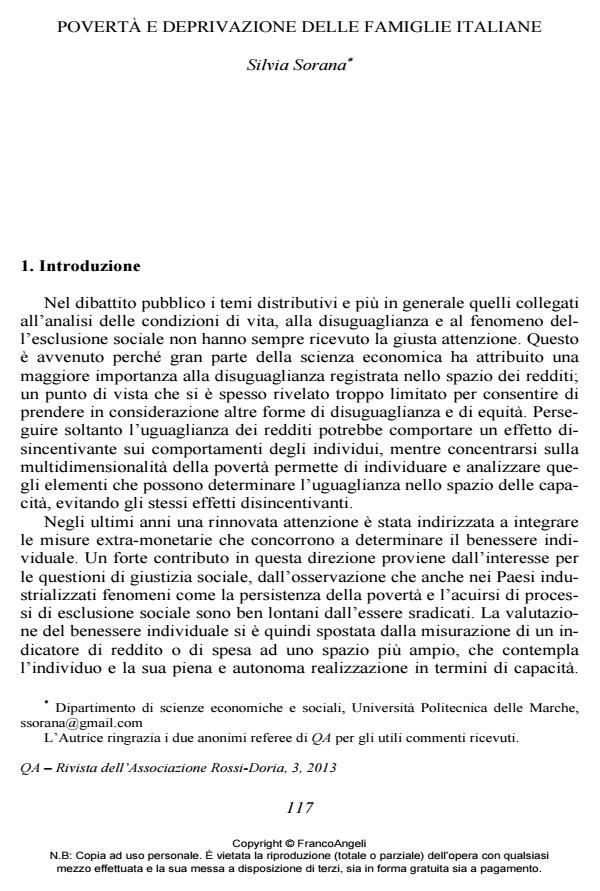Povertà e deprivazione delle famiglie italiane
Titolo Rivista QA Rivista dell’Associazione Rossi-Doria
Autori/Curatori Silvia Sorana
Anno di pubblicazione 2013 Fascicolo 2013/3
Lingua Italiano Numero pagine 43 P. 117-159 Dimensione file 782 KB
DOI 10.3280/QU2013-003004
Il DOI è il codice a barre della proprietà intellettuale: per saperne di più
clicca qui
Qui sotto puoi vedere in anteprima la prima pagina di questo articolo.
Se questo articolo ti interessa, lo puoi acquistare (e scaricare in formato pdf) seguendo le facili indicazioni per acquistare il download credit. Acquista Download Credits per scaricare questo Articolo in formato PDF

FrancoAngeli è membro della Publishers International Linking Association, Inc (PILA)associazione indipendente e non profit per facilitare (attraverso i servizi tecnologici implementati da CrossRef.org) l’accesso degli studiosi ai contenuti digitali nelle pubblicazioni professionali e scientifiche
La condizione di deprivazione e di povertà degli individui non può essere spiegata attraverso la sola misura del reddito. La multidimensionalità del fenomeno può avvalersi dell’approccio delle capabilities di Amartya Sen per spostare l’attenzione dai redditi alle capacità. La differente capacità di tradurre il reddito in benessere dipende dalle caratteristiche individuali: in particolare, lo svantaggio nel convertire il reddito in "funzionamenti" e le disparità all’interno di un gruppo sociale possono essere determinanti per la qualità della vita. Maggiori capacità personali portano ad accrescere la possibilità di produrre e guadagnare, pertanto analizzare questa dinamica può rivelarsi fondamentale per spiegare le condizioni di deprivazione degli individui.
Parole chiave:Povertà multidimensionale, Capacità, Qualità della vita
Silvia Sorana, Povertà e deprivazione delle famiglie italiane in "QA Rivista dell’Associazione Rossi-Doria" 3/2013, pp 117-159, DOI: 10.3280/QU2013-003004